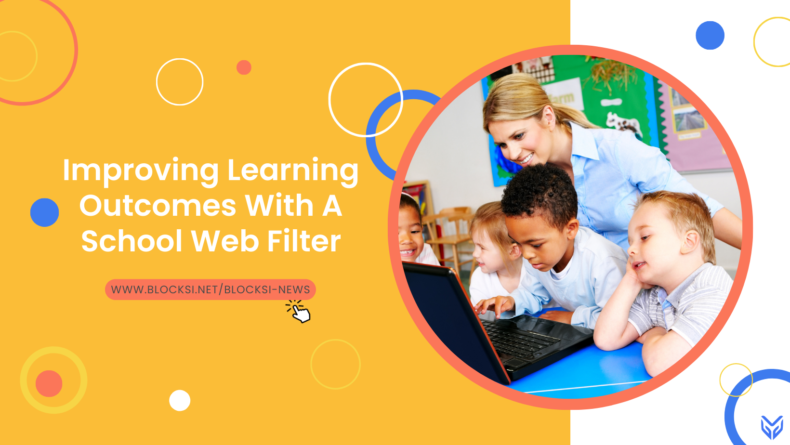NEWS
Improving Learning Outcomes With a School Web Filter

According to Learn Platform’s fall 2022 report, the use of EdTech is rapidly increasing – it has nearly tripled since 2018. On average, educators use 148 unique EdTech tools over the entire school year, and K-12 students use 145. This includes using classroom engagement and instruction tools, like Kahoot!, learning management systems, such as Google Classroom, courseware platforms, study tools, and other technological tools, enriching the learning experience.
As students use more tech tools and web content, they become more exposed to both positive and negative effects of internet usage. That is why educators must manage the safe usage of the web for students accordingly. Thus, web filtering software is required in every educational environment. So a school web filter must be put in place to function as a barrier and buffer against offensive content that can harm students’ digital well-being.
What additional benefits come with having such student safety software in place, though? How can it further enhance the teaching and learning experience in an era when 1:1 school districts are becoming a new reality? And especially – how does web filtering for schools improve learning outcomes?
In the past, a school’s technology department has often been the only one in charge of online filtering. The K-12 web filter was selected by the technology department, which also set it up and determined which websites would be restricted. In this case, the content filters did have an impact on learning, but they were no way near bulletproof and teachers didn’t get a say in what content students could access. Thankfully, classroom screen monitoring software today is much more adjustable and practical. In this post, we will explore its main benefits on student learning outcomes.
Web Filtering Improves Students’ and Teachers’ Productivity
Contrary to widespread assumption, using technology in the classroom helps students learn more rather than distract them. It also helps students focus better, removes outside distractions, and facilitates more effective knowledge transfer. By restricting access to social media, gaming, and other distracting websites, students can keep focusing on their studies more efficiently. And with it, they reduce the risk of procrastination and improve their academic performance.
This is especially important during classroom time when students should pay attention to the lesson at hand. Students who access only relevant media linked to the curriculum learn and communicate more effectively. With no distractions, students can keep their focus on learning and teachers on teaching.
Less Distractions and Better Mental Health Outcomes
While academic excellence remains a primary adjective for schools, students’ overall well-being must be emphasized – since it reflects on every aspect of life. When they can’t spend time on irrelevant or inaccurate content, they focus on schoolwork and perform better. And that also excludes time otherwise lost by cyberbullying, which is blocked by the software. According to research, victims of cyberbullying experience increased emotional and psychosomatic issues, social challenges, and a decreased sense of safety and care in educational settings. So, students being exposed to less cyberbullying tend to experience fewer mental health issues and thus perform better in school.
Improved Learning Environment
Minimizing distractions and fostering a secure and effective setting using school filtering contribute to developing a more favorable learning environment for students. This may result in a more fulfilling and enjoyable learning experience, enabling pupils to realize their full potential. An improved learning environment also enables students to participate in more beneficial and fulfilling learning activities that will improve their overall educational success.
Preventing Cheating
Another significant benefit a school web filter and corresponding software can bring is the ability to monitor and control students’ online activity in real time. This can help identify any students engaging in problematic online behavior such as cheating. With such tools in place blocking exam-related content, school administrators and teachers can quickly address any issues and ensure that students follow school rules and regulations.
Customizing Each Student’s Learning Experience
Finally, school web filters allow teachers to customize their students’ online experience. They can allow access to specific sites and resources relevant to their lessons while blocking access to web content that may not be useful or productive. Such filtering can help create a tailored learning experience optimized for student success and allow teachers to optimize learning experiences for each and every student.
School Web Filters Come as a New Opportunity for Upgrading the Learning Experience
In conclusion, web filtering for K-12 schools can have a positive impact on learning outcomes by improving students’ and teachers’ productivity and the learning environment, eliminating distractions, bettering student safety and, with it, supporting students’ mental health, preventing cheating, and making sure each student gets to learn in a way closest to their fullest potential.
SOURCES
[1] EdTech Top 40: Fall 2022 Report
[2] Bottino, S. M. B., Bottino, C., Regina, C. G., Correia, A. V. L., & Ribeiro, W. S. (2015). Cyberbullying and adolescent mental health: systematic review. Cadernos de saude publica, 31, 463-475.





